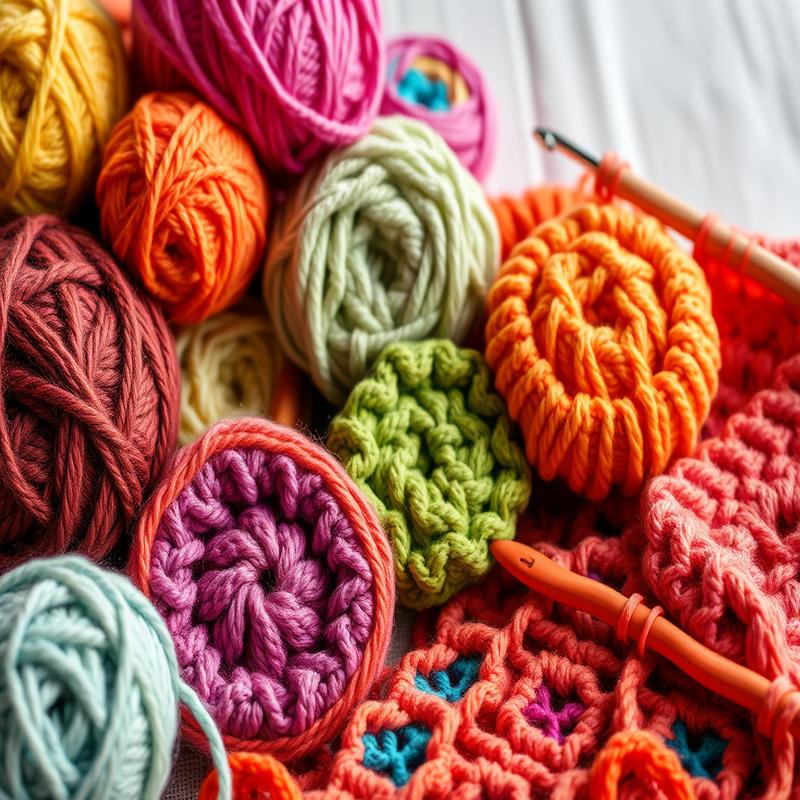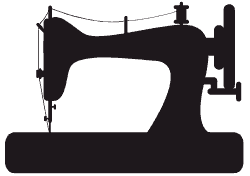double treble crochet
Double treble crochet is a fun and versatile stitch that opens up a world of creativity in your crochet projects.
If you’ve mastered the basic stitches, like the triple crochet, you’re ready to take it up a notch with the double treble.
This stitch creates a lovely, airy texture that’s perfect for blankets, shawls, or any project that needs a little more drama.
Plus, it gives you the chance to experiment with different yarns and colors.
In this guide, we’ll dive into the basics of the double treble crochet stitch, comparing it to other stitches like the DTR crochet stitch and exploring various different crochet stitches.
Whether you’re crafting a beautiful crochet stitch patterns or following a crochet stitches guide, the double treble stitch will add a unique touch.
Let’s get started and have some fun!
“`html
“`
What is Double Treble Crochet?
Double Treble Crochet (DTR) is a popular crochet stitch that adds height and texture to various crochet projects.
As an advanced stitch, it is characterized by its tall and airy nature, which makes it ideal for creating lacy patterns, intricate designs, and decorative accents in afghans, shawls, and garments.
The Double Treble Crochet stitch involves wrapping the yarn around the hook three times before inserting it into the stitch, making it taller than both single and double crochet stitches.
This technique not only enhances the visual interest of the work but also allows for greater flexibility in creating unique shapes and patterns.
How to Perform a Double Treble Crochet
To perform a Double Treble Crochet stitch, follow these steps:
1. Begin with a slip knot on your hook.
2. Yarn over three times.
3. Insert the hook into the designated stitch or chain.
4. Yarn over and pull through, resulting in four loops on the hook.
5. Yarn over again and pull through the first two loops (three loops remain).
6. Yarn over again and pull through the next two loops (two loops remain).
7. Yarn over a final time and pull through the last two loops (one loop remains).
This sequence creates a tall stitch that adds dimension to your crochet work.
Applications of Double Treble Crochet
Double Treble Crochet can be applied in various ways, such as:
- Creating intricate lace patterns
- Adding height in motifs and granny squares
- Incorporating decorative elements in garments
The versatility of DTR makes it an essential stitch for crocheters looking to elevate their craft and produce stunning pieces.
As with many crochet techniques, mastering Double Treble Crochet takes practice.
Once you become comfortable with the stitch, you can explore a plethora of creative possibilities in your crochet projects.
Embrace the beauty of Double Treble Crochet and let it inspire your artistry in yarn.
Tools and Materials Needed

To successfully master double treble crochet, having the right tools and materials is essential. The following list outlines what you need to begin your double treble crochet journey.
Essential Tools
- Crochet Hook: A larger hook size, typically 3.5 mm to 10 mm, is recommended for double treble crochet, depending on the yarn thickness.
- Yarn: Choose yarn suited for your project. Varieties such as acrylic, cotton, or wool can be used.
- Scissors: Sharp scissors are necessary for cleanly cutting yarn at the end of your project.
- Tapestry Needle: A large-eyed needle is crucial for weaving in ends and finishing your work.
- Measuring Tape: This is useful for ensuring you have the right dimensions for your project.
Additional Accessories
- Stitch Markers: These can help keep track of your stitches, especially in complex patterns.
- Row Counter: Useful for keeping track of the number of rows completed, especially in larger projects.
- Pattern Guide: A printed or digital guide can help you follow along with patterns specifically designed for double treble crochet.
Choosing the Right Yarn
When selecting yarn, consider the thickness and texture.
| Yarn Weight | Recommended Hook Size |
|---|---|
| DK (Light) | 4.0 mm |
| Worsted (Medium) | 5.0 – 6.0 mm |
Benefits of Double Treble CrochetDouble Treble Crochet (DTR) is an advanced crochet technique that offers a myriad of benefits for both novice and seasoned crafters. Firstly, the length and height of DTR stitches allow for the creation of open and airy designs. Secondly, using DTR increases the versatility in creating texture. Moreover, mastering DTR provides a sense of accomplishment for crocheters. Double Treble Crochet also opens doors to experimenting with various yarns and hooks. The stitch is also advantageous when working with motifs and large panels. For those interested in expanding their crochet skills, resources such as this guide and this detailed site provide valuable insights. With its striking appearance, versatility, and ability to enhance creative expression, Double Treble Crochet is more than just a stitch; it is a valuable technique that broadens the horizons of crocheters. Basic Techniques for Double Treble CrochetTo effectively master double treble crochet (DTR), understanding the fundamental techniques involved is essential. First and foremost, it’s important to recognize that DTR is taller than standard double crochet stitches. This technique consists of a sequence of yarn overs and pulls through loops, creating a unique texture ideal for various crochet projects. Starting a Double Treble Crochet StitchTo begin, follow these steps: 1. **Yarn Over**: Start by making three yarn overs. This means you will wrap the yarn around your hook three times. Practicing the StitchPractice is crucial for mastering DTR. Consider these tips:
An effective way to solidify your understanding is to create a sample square where you exclusively practice DTR stitches. This not only strengthens your skill but also results in a beautiful swatch that you can incorporate into future projects. Combining with Other StitchesOnce you’re comfortable with the basic DTR, experiment with combining it with other stitches. This can enhance your designs and introduce new textures. Incorporating DTR into established patterns can significantly enhance visual interest, thus enriching your crochet repertoire. With practice and attention to technique, double treble crochet can become an invaluable skill in your crafting journey. Common Patterns Using Double Treble CrochetDouble treble crochet (DTC) is a versatile stitch that adds texture and dimension to a variety of crochet projects. It is often employed in patterns that require height and a bit of drama. Here are some common patterns that utilize double treble crochet: 1. Shawls and WrapsDouble treble crochet can create stunning shawls that drape beautifully. Its height allows the piece to grow quickly, while the openwork can be visually appealing. Many shawl patterns integrate DTC into lace designs, providing a delicate look ideal for layering. 2. Blankets and AfghansIn larger projects like blankets and afghans, DTC can be used for creating focal points or borders. The added height gives texture and can enhance visual interest. For instance, a granny square blanket might feature double treble crochet in the center for a raised effect. 3. Scarves and CowlsScarves can benefit greatly from double treble crochet, offering warmth without excessive weight. Patterns often mix DTC with other stitches to create unique textures. Consider patterns that use clusters of DTC to form eye-catching designs. 4. AmigurumiDouble treble crochet is sometimes used in amigurumi projects to create oversized features or decorative elements. This technique adds a playful aspect to the usually small and tight stitches seen in amigurumi. 5. Decorative Borders and EdgingsDTC is excellent for borders and edgings, providing a scalloped or wavy finish to any project. You can experiment with incorporating DTC into existing patterns to elevate their appearance.
The possibilities with double treble crochet are vast. Experimenting with this stitch can lead to unique and exciting projects. Whether you’re a beginner or an experienced crocheter, double treble crochet can certainly add a new dimension to your creations. How to Fix Mistakes in Double Treble CrochetMistakes are a natural part of the crochet journey, and knowing how to fix them is essential for every crocheter. Here are some common mistakes in double treble crochet and how to address them: 1. Uneven TensionIf your stitches are inconsistent in size, it may be due to uneven tension.
2. Missed StitchesIf you accidentally skip a stitch, you can do the following:
3. Incorrect Stitch CountIf you notice you have more or fewer stitches than necessary:
4. Twisted StitchesTo fix twisted stitches, follow these steps:
5. Unraveling MistakesWhen mistakes are extensive, it may be best to start over:
Remember, fixing mistakes is all part of the crochet process, and each correction enhances Tips for BeginnersWhen starting your journey with double treble crochet (DTR), there are several tips that can make your experience more enjoyable and productive. 1. Start with the Right YarnChoosing the right yarn can significantly impact your learning experience. Opt for a medium-weight yarn like worsted weight, as it is easier to work with compared to finer yarns. 2. Use Appropriate Hook SizeA hook that complements your yarn weight is essential for achieving the desired stitch tension. For worsted weight yarn, a 5mm to 6mm hook is generally recommended. 3. Practice Basic Stitches FirstBefore diving into DTR, ensure you are comfortable with basic stitches, such as chain, single crochet, and double crochet. This foundational knowledge will help you grasp DTR more quickly. 4. Proper Yarn Over TechniqueHeed the importance of the yarn over technique, particularly when you are doing the multiple yarn overs required for a double treble crochet.
5. Count Your StitchesMaintaining an accurate stitch count is vital in crochet.
6. Stay RelaxedTension plays a key role in the outcome of your crocheted pieces.
7. Practice, Practice, PracticeFinally, the most effective way to improve your double treble crochet skills is through consistent practice. Don’t get discouraged by initial mistakes; each attempt will refine your technique. With patience and perseverance, you will soon find joy in creating beautiful designs using double treble crochet. Advanced Techniques with Double Treble CrochetMastering double treble crochet (DTC) opens up a world of advanced techniques that can elevate your crochet projects. As you become more comfortable with the basic stitch, you can explore various ways to incorporate DTC into intricate designs, enhancing both texture and visual appeal. 1. Combining StitchesOne of the exciting aspects of advanced DTC is the ability to combine it with other crochet stitches.
Each combination adds unique characteristics to your project. 2. Color TechniquesIncorporating color can add depth and interest to your work.
Utilizing these methods can significantly enhance your designs. 3. Lacework with DTCCreating lace patterns is another advanced DTC technique that requires patience but yields stunning results. For lace projects, consider:
This not only showcases your skill but also broadens your creative horizons. 4. Textured PatternsDouble treble crochet is perfect for creating textured designs. To achieve this:
These textured patterns can be used in various projects, from garments to home decor. 5. Freeform CrochetFor those looking to stretch their creativity, freeform crochet using DTC allows for unlimited Exploring Variations of Double Treble Crochet
Double treble crochet (Dtr) is a versatile stitch that can be adapted in numerous ways, allowing crocheters to innovate and personalize their projects. 1. Yarn ChoicesDifferent yarn weights can drastically change the look and feel of your double treble crochet.
2. Stitch VariationsAdjusting the stitch can yield unique textures and patterns.
3. Color TechniquesIncorporating color changes can enhance the beauty of double treble crochet.
4. Integrating with Other StitchesDouble treble crochet can be combined with other stitches for varied designs.
|






